Retailers Reveal Digital Transformation Plans
By Natalie Kotlyar & Malcolm Cohron
With retail bankruptcies dotting the landscape and the end of economic expansion on the horizon, the call for retailers to evaluate what is and isn’t working for their business has never been more imperative.
At the same time, the retail industry is at the epicenter of foundation-shaking forces: innovative startups, evolving consumer behavior, and the technology that has enabled it all. The once-giants of retail have been dwarfed—some altogether eliminated—by the industry Goliath, Amazon. Offering an endless universe of products available (to order) at any hour of day, free one-day shipping, and an attractive return policy, Amazon has almost single-handedly driven the latest evolution in retail.
Meanwhile, the consumption habits of millennials and Gen Zers—digital natives who prioritize experience over product—have turned the nature of shopping on its head. Now, they use their smartphones or voice assistants to research products and buy them online and pick them up in stores (BOPIS); or, on the flip side, see a product in the store and buy it online (SISBO) for a better price or to avoid waiting in line. They even have the ability to walk into a store and use augmented reality-enabled mirrors to “try on” clothes.
While the traditional retail model isn’t dead—in-store purchases still represent the lion’s share of total retail sales—it is besieged. Customers expect more (and more) from their shopping experience: more convenience, more personalization, more value. As customer expectations have changed, retailers have scrambled to catch up and keep up, to get ahead not just of the competition, but of the consumers themselves. In order to stay relevant—and in the black—a retailer has to anticipate and deliver on consumers’ needs and wants.
To adapt to the digital commerce environment, retailers are revamping their business strategies by meeting disruption with disruption: 93% of retailers say they have developed or are in the process of developing a digital transformation strategy, and 20% of retailers have identified digital transformation as a top priority to address customer experience specifically, according to BDO’s 2019 Middle Market Digital Transformation Survey.
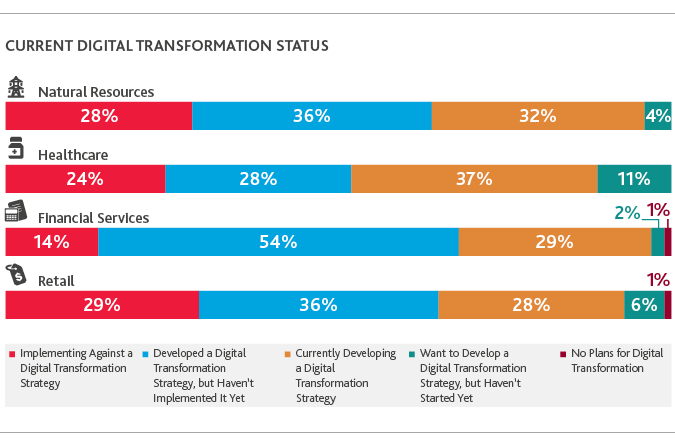
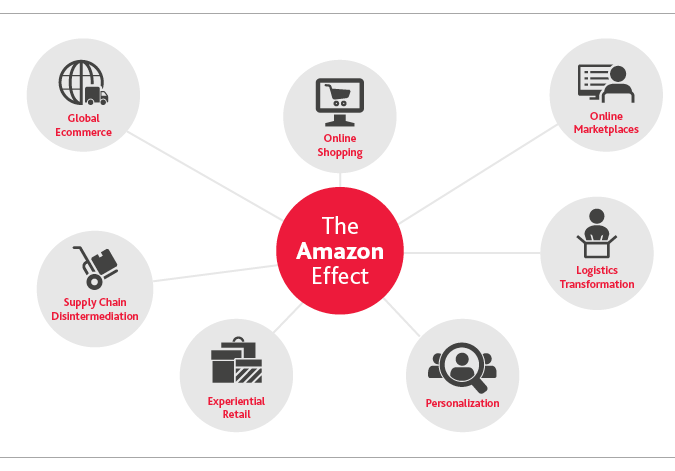
Amazon patented its 1-Click online purchasing technology in 1999. Two decades later, the technology behemoth has drastically changed the game for customers and for brick-and-mortar retail, upending the traditional retail model in a number of ways:
Online shopping – Amazon spawned an e-commerce boom that fundamentally changed the way consumers shop: 67% of millennials prefer to shop online. As a result, developing an omnichannel sales strategy has become necessary to remain competitive.
Mobile commerce – Spanning shopping, banking, and payments, mobile commerce is arguably the next evolution of e-commerce and already a well-established mainstay. Voice commerce is anticipated to take off in tandem with growing user adoption of voice assistants.
Global e-commerce – Because the Internet has no borders, online shopping has also enabled the globalization of retail sales. Today’s consumer can shop whenever they want, wherever they want. It’s not that simple, of course. Research shows that 75% of shoppers won’t even bother with a site that isn’t in their language. Shipping overseas also entails more complex logistics.
Online marketplaces – eBay may have been the first online marketplace, but Amazon helped popularize them. Amazon recently revealed that it now fulfills more orders from the 300,000 small- and medium-sized businesses on its marketplace than from its own fulfillment centers. According to RetailWeek, 44% of all retailers are trying to turn their online stores into marketplaces that facilitate sales to third parties, in addition to hawking their own goods and services.
Personalization – Amazon is leading the personalization game with its recommendations engine, which harnesses data from a user’s purchase history, items they’ve looked at, items they’ve rated and liked, and what other buyers of those same items have viewed and purchased. For online shoppers, 45% are more likely to shop on a site that offers personalized recommendations, and 56% are more likely to return to a site that offers product recommendations.
Logistics transformation – Amazon also set a new standard for convenience through its Amazon Prime program, which today has more than 100 million members. Two-day shipping has become the gold standard—and Amazon just one-upped itself, announcing on April 25 that it would make one-day shipping standard for Prime members. No retailer can assume buyers will put up with getting their goods several days later via the U.S. Postal Service.
Supply chain disintermediation – Amazon has been able to leverage its network to drive cost savings by cutting out intermediaries where possible. It launched “Fulfillment by Amazon” back in 2006, disrupting the fee model for logistics and order fulfilment.
What Is Digital Transformation?
Digital transformation, in the truest sense of the term, is more than converting analog to digital; it’s a fundamental shift in how a business operates to compete in a digital world. We identify three key areas of transformation—ultimately enabled by end-user adoption.
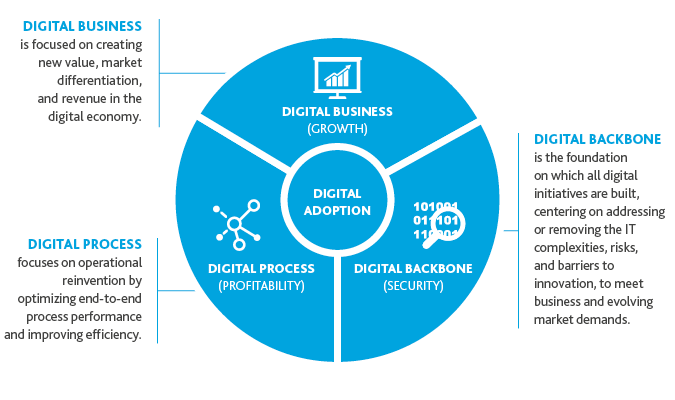
For retail, digital transformation can mean developing a seamless omnichannel experience, offering individual product customization, or launching a new subscription service (a transformation rooted in Digital Business). It can mean streamlining the supply chain to identify cost savings or automating fulfillment to reduce cycle time (Digital Process). Or it can mean increasing the agility and scalability of IT infrastructure to enable adoption of newer technologies in the future (Digital Backbone).
Digital Change Engenders Cyber-Concerns
Retailers might recognize that transformation is necessary to their long-term survival, but many are struggling to balance the desire to innovate with the need to manage risk: their fears of a breach of data privacy outweigh their concerns about disruption.
These fears are not without foundation: a 2018 report by cybersecurity firm Shape Security found that online retailers face the highest proportion of “credential stuffing” attacks, representing 80% to 90% of retailers’ login traffic. In addition, BDO’s recent Retail Rationalized Survey found that 75% of U.S. retailers believe a national data privacy regulation is coming soon.
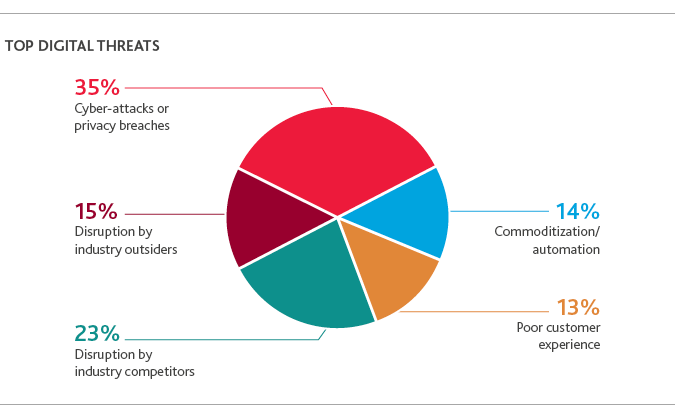
Bolstering cybersecurity thus outweighs any other digital initiative, cited by 75% of mid-market retailers as one of their top three short-term business goals. No other industry had greater than 50% of respondents rank cybersecurity in their top three short-term or long-term business goals. That may be a reflection of the uneven impact of the General Data Protection Regulation on the retail industry, but it could also indicate that retailers, especially traditional retailers, simply have a lower risk appetite than their mid-market peers in other sectors. When it comes to what retailers see as the greatest obstacle to digital transformation, cybersecurity ranked ahead of budget and resource constraints, suggesting that fear, not capacity, is the biggest challenge to implementing a new digital initiative.
To stay competitive, however, retailers will need to prioritize revenue-generating digital initiatives that address consumer pain points unmet by competitors or automate routine processes that detract from that focus. Accordingly, retailers expect to shift their focus in the next few years, with reducing operational inefficiency and improving customer experience ranking as the top two goals.
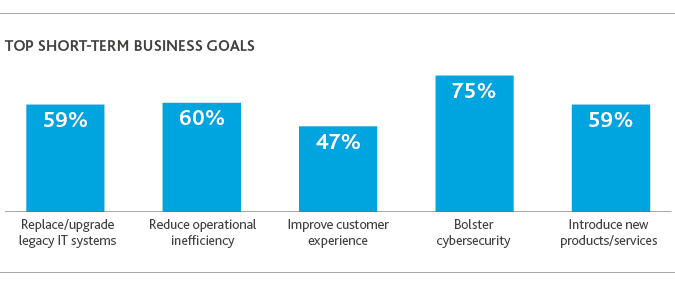
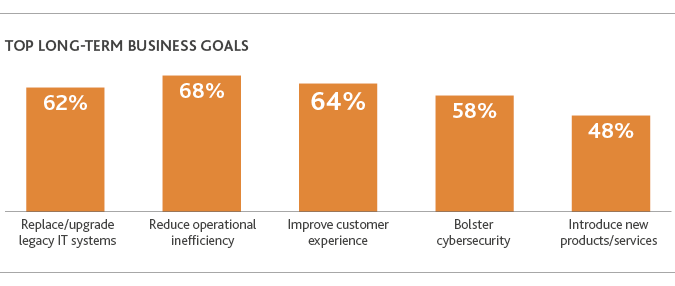
Retail Recognizes Digital Transformation’s Benefits
Despite prevalent cybersecurity concerns, most retailers are making at least some investment in new digital capabilities to improve delivery services and product lines, as well as boost speed to market for new products.
And they’re already seeing the benefits: 63% of midsized retailers report revenue and profitability increases from their digital initiatives in the last 12 months. Notably, early adopters of technology in the retail sector are outperforming their peers.
Among the advanced technologies retailers are currently deploying are cloud computing (69%), advanced analytics (60%), automation (46%), the Internet of Things (38%), artificial intelligence (35%), and blockchain (28%). Expect the adoption of blockchain, automation, and the Internet of Things to increase: About 50% of surveyed retailers say they are considering deploying these advanced technologies in the near to medium term.
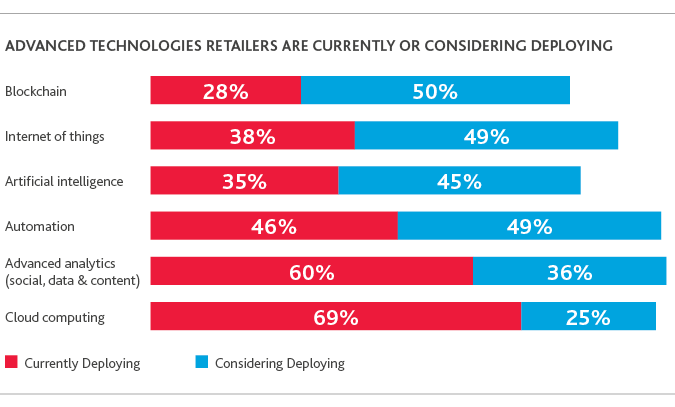
BDO Client Case Study: Luxury Jeweler
The launch of the Apple Watch posed a real threat to traditional watchmakers, combining fashion with technology. According to analyst estimates, Apple Watch sales reached 12 million in its debut year—nowhere near the adoption rate of smartphones, but enough to cut into a significant chunk of luxury watch sales.
To reinvigorate sales, a luxury jeweler tasked our professionals with improving customer engagement. We conducted a design-thinking workshop to co-create a personalized buying experience targeted specifically at high-end clientele and focused on creating an intimate relationship between the representative and the individual customer.
The new in-store digital experience enabled the customer to customize the watch features, from the face to the band to the inscription, to their personal and unique liking—all while visualizing the watch on their own wrist with augmented reality technology. Billing and order fulfillment could then be done right then and there, without the customer needing to stand in line.
Over a six-month period, the jeweler saw an increase in sales of 38%. In addition, newly empowered and engaged customers were now open to product upselling and cross-selling, increasing the original average order size by 60%.
Funding Retail Innovation
Unlike their larger peers, most middle-market retailers don’t have the luxury of reaching into deep pockets to finance their digital initiatives.
But by and large, they recognize digital transformation is an imperative and are investing accordingly: 71% plan to increase spending on digital initiatives in the next 12 months.
To fund digital transformation, retailers are using a cocktail of financing tools. Working capital and private funding are the largest go-to sources of capital, followed by financing through a sale or divestment, and using R&D tax credits and incentives. Public equity and government grants are also among the suite of financing tools.
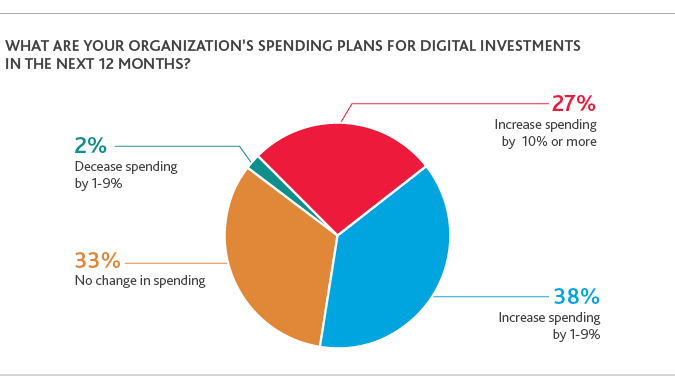
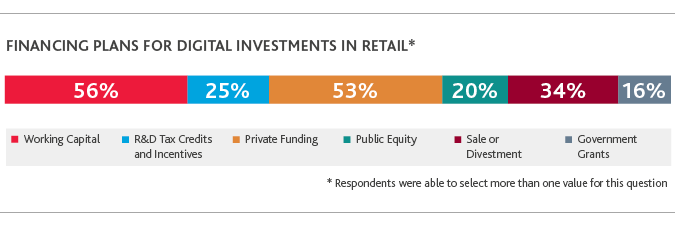
One way to free up capital resources is by identifying opportunities to streamline and consolidate IT assets and processes in the digital backbone, thereby reducing CapEx and OpEx. Applying robotic process automation to routine manual processes, for example, results in both cost savings and increased workforce capacity that can be reinvested in more transformative digital efforts.
The retail industry also seems to be recognizing that partnerships can help traditional retailers stay relevant as they build out their technology and reach, while putting customers at the forefront. Retailers have been deploying capital into M&A increasingly with nontraditional partners. The value of U.S. deals in the retail trade sector reached approximately $8.85 billion as of Q3 2018, according to Statista. Deal activity throughout 2018 illustrates a growing trend of traditional retailers partnering with start-ups and pure-play e-tailers—some of which may once have been competitive threats.
Digital Transformation Hinges on Human Engagement
Technology is only one piece of the digital transformation puzzle.
For digital transformation to be successful, there must be a shift in mindset that hinges not on digital capabilities but on the adoption of those digital capabilities by employees.
In other words, digital transformation is often a people problem—especially for an industry like retail that is already plagued with uniquely challenging workforce management issues. Lack of skills ranks as the second biggest obstacle to successful implementation, just behind the legacy IT interoperability (or lack thereof). Employee pushback ranks as the third greatest barrier, reflective of a multigenerational workforce with different expectations and levels of tech sophistication.
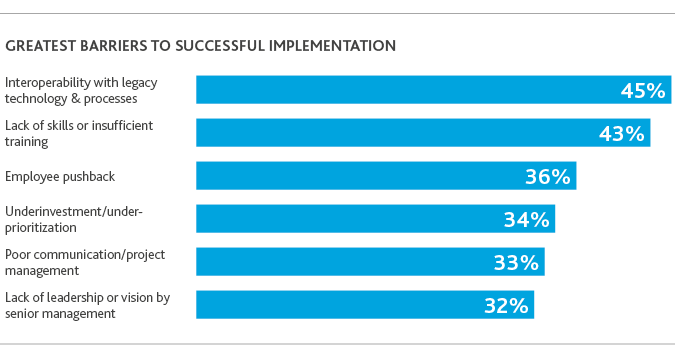
One of the biggest challenges to achieving adoption on the employee side is in establishing a corporate culture that, on a basic level, encourages personal change. A culture that embraces experimentation and learning and that accommodates for short-term mistakes and failures in the pursuit of long-term innovation and value creation is pivotal for operational change to become truly integrated into the fabric of the business.
To enable behavior change and encourage adoption of new digital capabilities, half of retailers are developing a formal change management strategy. Another 50% are implementing training to upskill employees, while 44% plan to hire new talent.
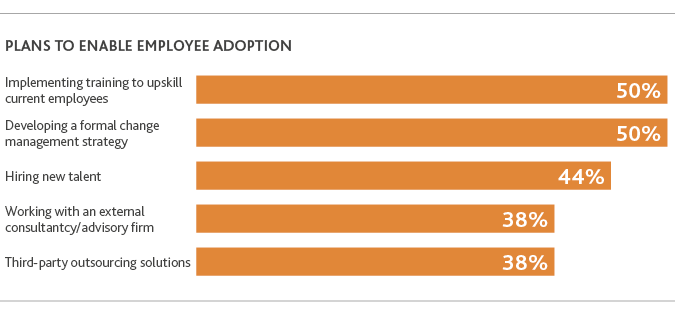
The retail industry is in the midst of foundational change. The pressures of e-commerce, Amazon’s ever-growing consumption of market share, and fast-evolving consumer behavior are forcing companies to adapt to a new paradigm—one that is still being defined but that dovetails with digital transformation. In order for retailers to make it through this evolution, they need to do more than come to terms with the fact that the industry is changing; they must embrace that change and move ahead of it. For retailers, deploying digital technologies in the name of strategically redefining how businesses function in this dynamic landscape is necessary for their survival.
SHARE